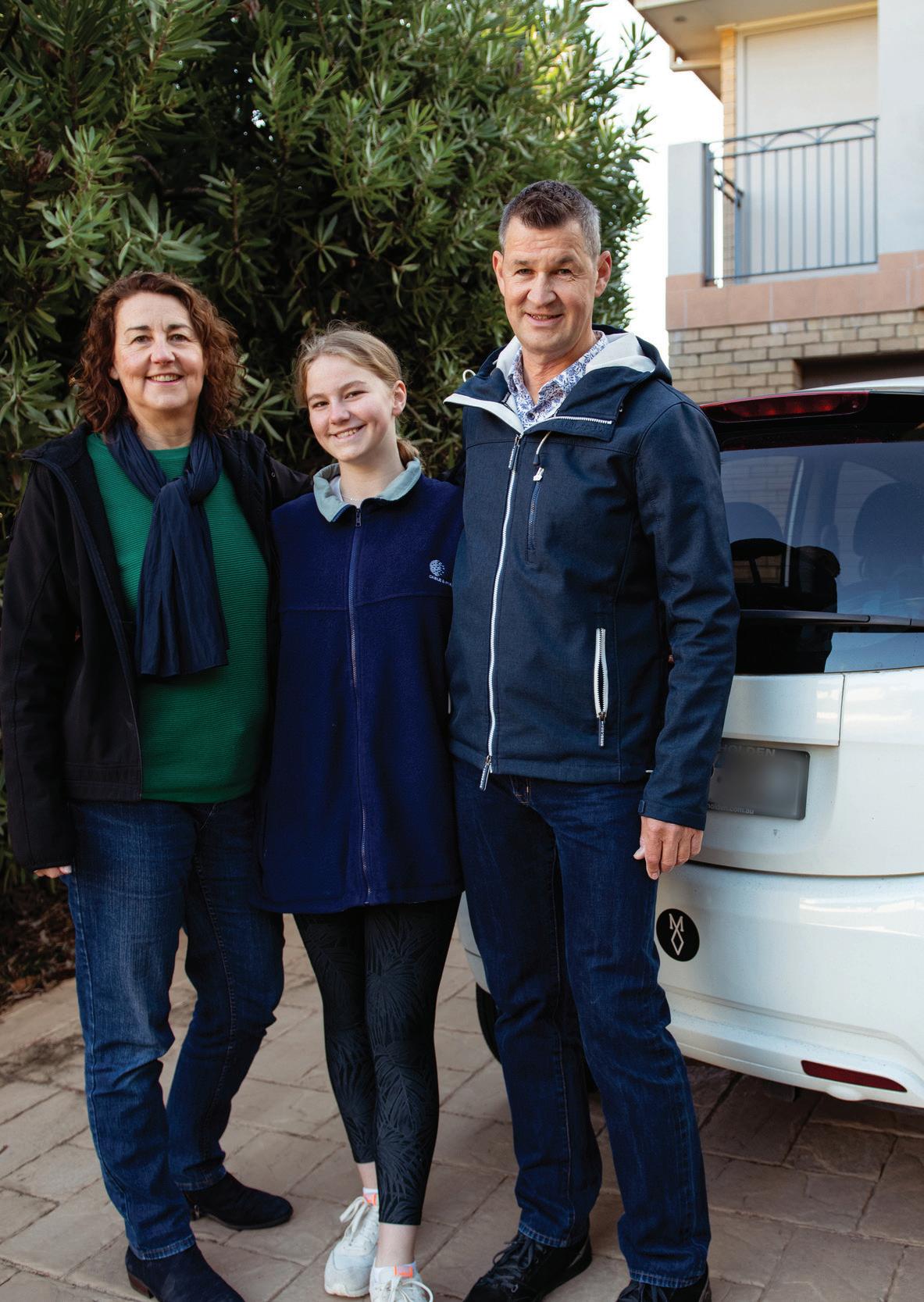




GREENPEACE AUSTRALIA PACIFIC
SEPTEMBER 2022
V1.1
Greenpeace Australia Pacific Limited acknowledges the Traditional Owners of Country throughout Australia and the Indigenous peoples of the Pacific Islands, and recognises their continuing connection to land, waters, and culture. We pay our respects to their Elders past and present.
Greenpeace Australia Pacific Limited would also like to acknowledge the work of independent think tank InfluenceMap in contributing to the evidence base of this report. Their monitoring and data-driven analysis of global business and finance lobbying shines a light on vested interests fuelling the climate crisis.

1.
2.
Toyota, one of the world’s biggest and most trusted car manufacturers, is also one of the world’s most aggressive anticlimate lobbyists, with an international track record of lobbying against the introduction of vehicle pollution standards, and actively working to slow the uptake of electric vehicles.
A recent investigation by the Sydney Morning Herald found that the Australian car lobby, of which Toyota is the largest member, aims to weaken proposed measures to curtail vehicle pollution.
3.
The Australian Federal Government is currently considering the introduction of fuel efficiency standards regulating climate pollution from cars, which would ensure wider choice of more efficient and zero emissions vehicles for Australian consumers. Based on information contained in this report, Greenpeace Australia Pacific holds there is a strong risk Toyota will use its established tactics to distract, weaken, and delay effective legislation in Australia.
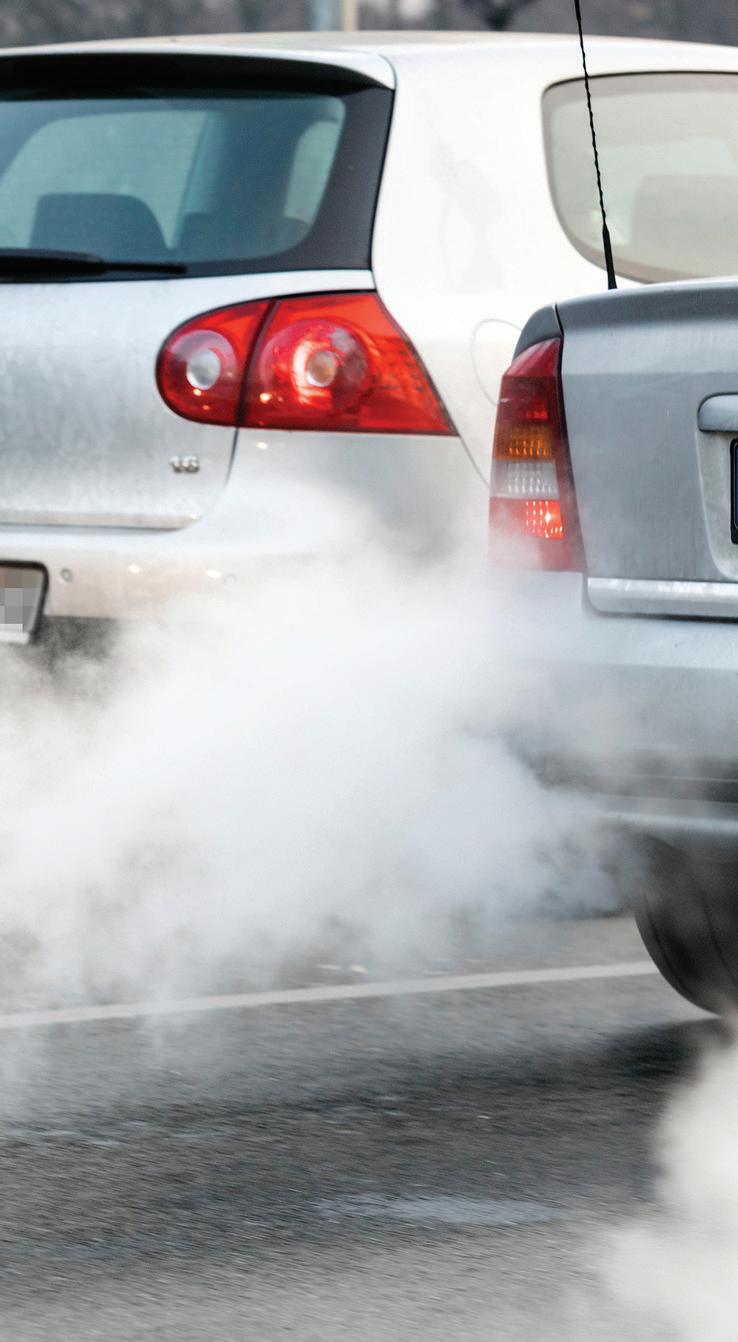
Australia is at a crossroads in our transition to zero-emissions transport. Australia is one of the only countries in the OECD without national standards regulating the carbon emissions of new vehicles. Without these standards, often called fuel efficiency standards, car manufacturers could use Australia as a dumping ground for inefficient, highly-polluting vehicles which many other markets will no longer accept.
As of August 2022, the Federal Government is considering a National Electric Vehicle Strategy, which would include the introduction of fuel efficiency standards. These standards would ensure wider choice of more efficient and zero emissions vehicles for the Australian market.
Internationally, fuel efficiency standards have been introduced in 80% of developed economies, and are seen as a simple and effective policy mechanism for reducing road transport emissions. They have already been implemented in nations such as the United States, European Union, United Kingdom, China, Korea, Japan, and New Zealand, yet fuel efficiency standards in some jurisdictions have been met with fierce opposition from some car manufacturers that profit from the ongoing manufacture and sale of internal combustion engines. Toyota, the biggest car manufacturer in the world, has a track record as one of the worst global culprits in the car lobby’s efforts to slow electric vehicles.
Toyota is Australia’s largest and most trusted car maker. Yet its international track record of aggressive global lobbying against measures to lower climate pollution from transport has seen it ranked in the world’s top three most aggressive anti-climate lobbyists, alongside Exxon Mobil and Chevron.1
Our research into Toyota’s international lobbying efforts has found the company has an established pattern of tactics it employs in order to slow or weaken measures to reduce climate pollution from vehicle transport. This includes:
• Spreading disinformation to reduce public confidence in allelectric, zero emissions vehicles.
• Actively lobbying against legislation to regulate climate pollution from transport.
• Greenwashing the climate impact of its own vehicles through deceptive marketing.
• Championing outdated solutions, such as hybrid car technology, which prolong the usage of fossil-fuelled transport.
With fuel efficiency standards on the table for discussion in Australia, Greenpeace Australia Pacific holds that there is a strong risk Toyota, and its peak body, will employ this tactical playbook to weaken proposed legislation. Previous attempts to introduce fuel efficiency standards were quietly buried by the previous Morrison government or fell victim to anti-climate rhetoric.2
Transport pollution is Australia’s third largest and fastest growing source of greenhouse gas emissions, and strong fuel efficiency standards would be one of the fastest and most effective ways to hit the brakes on climate pollution from new cars. In August 2022, the Australian car lobby was accused of planning to weaken and slow the uptake of electric vehicles.3 Toyota, with its tarnished international track record, needs to be closely monitored in coming months for attempts to negatively influence legislation to facilitate affordable and accessible electric vehicles for all Australians.



Twenty-five years ago, when Toyota introduced the Prius hybrid, the company was a leader in reducing car pollution. But Toyota’s transition has stalled. The company has become one of the biggest roadblocks to electric vehicles.
The Greenpeace East Asia Auto Environmental Guide ranks Toyota as the worst on decarbonisation in a comparative analysis of top car makers, showing how the company has significantly fallen behind other major manufacturers on climate policy and the adoption of electric vehicles.4 In 2021, Toyota brands – Toyota, Lexus and Daihatsu – sold 10.3 million cars globally, including over 2 million fossil-fuel hybrids, yet only 14,000 pure electric vehicles.5 Only 7,000 units of Toyota’s first (and only) battery electric car, the BZ4X, were distributed before most were recalled due to the wheels literally falling off.6, 7 By 2029, only 14 percent of Toyota’s worldwide production is forecast to be battery electric vehicles, compared to other major manufacturers like Ford and Volkswagen Group who are projected to reach 36 percent and 43 percent respectively.8
The Toyota Group’s go-slow on transitioning to electric vehicles can be inferred to reflect the profitability of its integrated supply chain that includes subsidiaries across manufacturing, maintenance and technology for internal combustion engines. The subsidiaries include car companies Hino, Daihatsu and Lexus, as well as subsidiaries manufacturing machinery for textiles, automotive components for internal combustion engines, steel and steel products, electrical components, rubber, plastic, adhesives, real estate, insurance, trade and research.9
Internal combustion engines (ICEs) are a complicated piece of machinery, requiring lots of parts, ongoing maintenance and complex supply chains. Battery electric vehicles are far more simple and require little ongoing maintenance.10 Many of Toyota’s rivals began transitioning their supply chains in preparation for the battery electric revolution long ago and are now ramping up with significant investments,11 but Toyota has continued betting on fossil fuels and combustion engines despite facing significant risk of stranded assets.12
Toyota’s efforts to ensure continued manufacture and distribution of internal combustion engine vehicles has gained it a global reputation as an anti-climate lobbyist. This international track record reveals a repeated tactical playbook to slow uptake of zero-emissions electric vehicles, including:
Twenty-five years ago when the Prius was invented, hybrid technology was at the cutting edge of the transition to electric vehicles, but technology has moved on, with battery electric technologies quickly becoming the common-sense solution –particularly in countries like Australia with abundant renewable resources. Toyota has stalled on pure electric cars, opting to promote complicated and expensive hybrid and fuel cell technologies that will lock customers into paying for fossil fuels or unproven hydrogen for decades to come.
Since doubling down on fossil fuel hybrids and hydrogen cars, Toyota has resorted to disinformation campaigns to sell its outdated solutions. For example, Japan’s Sentaku Magazine reported Toyota distributed leaflets criticising EVs and decarbonisation policy and released educational materials that ignore battery electric solutions.13, 14 In other countries including Australia, Toyota has spread disinformation warning about electric vehicles, including putting marketing spin on their data to falsely argue that hybrids will reduce more emissions sooner than battery electric vehicles.15
Toyota has fought against government policies designed to reduce transport sector emissions, improve air quality and human health, and make electric vehicles more affordable, across multiple jurisdictions. See examples of this on page 12.
Toyota’s misleading advertising has been banned on a number of occasions, including in Norway where Toyota’s ‘self-charging’ hybrid marketing was deemed false advertising, and in the UK when the The Advertising Standards Agency banned an ad for incorrectly suggesting their Prius model emitted 1 tonne less carbon than an equivalent diesel car.17, 18

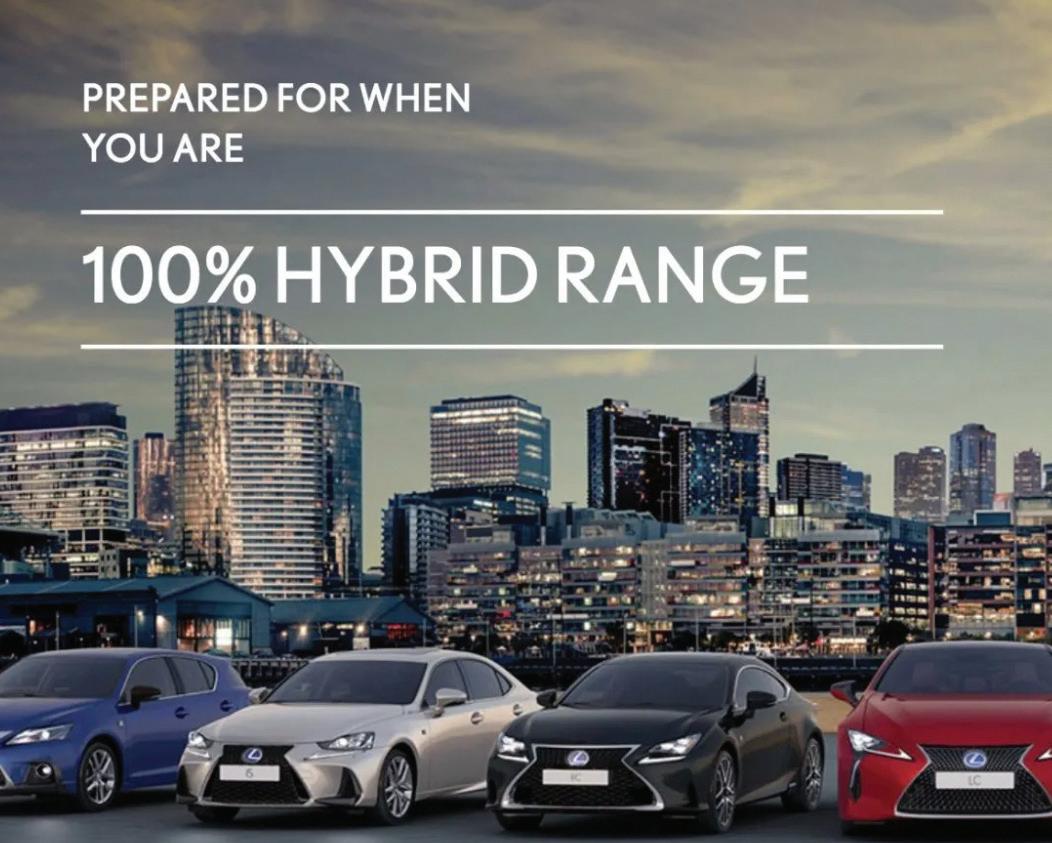
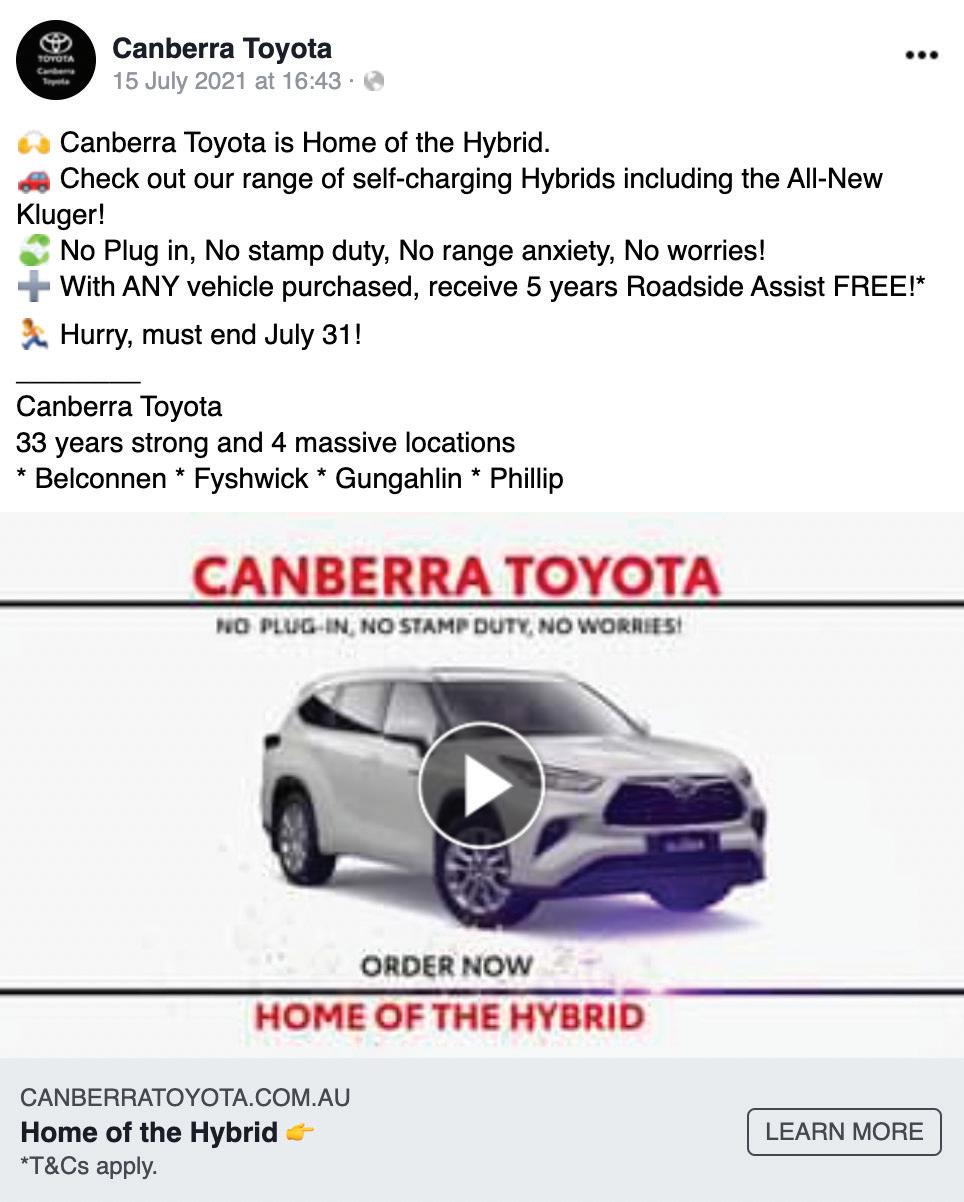
Figure 1: Toyota UK Twitter account showing their anti-EV hybrid marketing.19
Figure 2: Excerpt of the ad banned in Norway for false advertising.20
Figure 3: Canberra Toyota dealership Facebook ad that uses range anxiety to push hybrid sales over pure electric vehicles.21
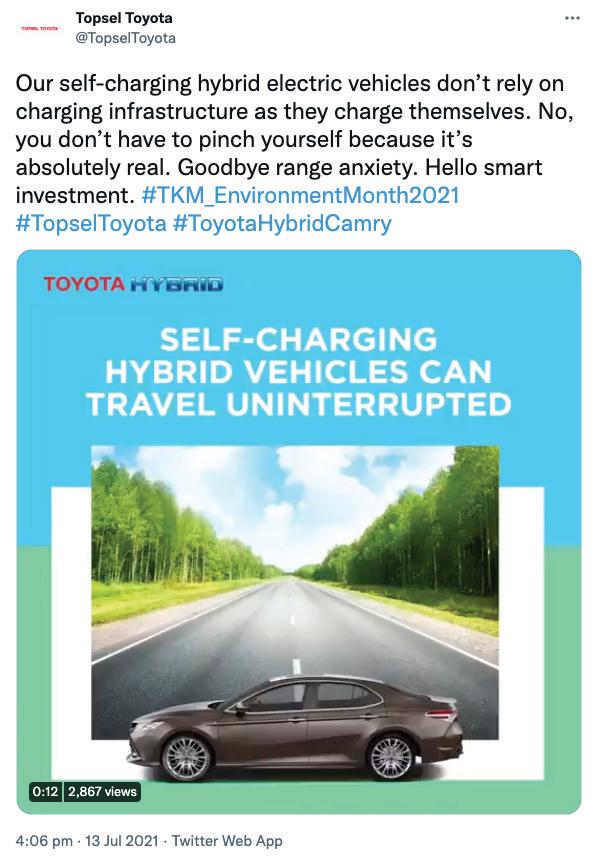

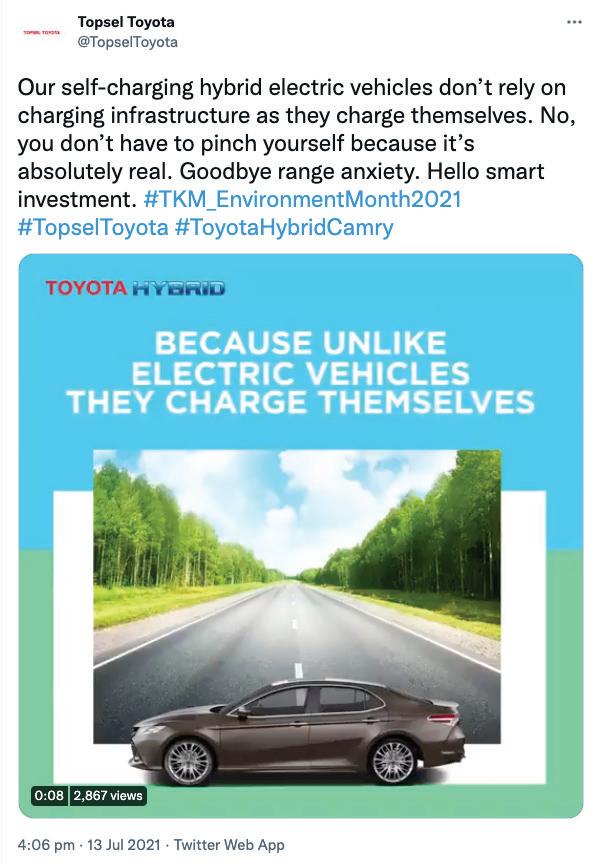

Figure 4: An example of aggressive anti-EV twitter marketing by Topsel Toyota dealership in India.22
Figure 5: Toyota-owned brand Lexus uses anti-EV content to promote hybrid vehicles 23
Think tank InfluenceMap has ranked Toyota alongside gas and oil companies Exxon Mobil and Chevron as one of the world’s most aggressive anti-climate lobbyists and worst on decarbonisation among global car makers.24 25
The excerpts below provide a snapshot of some of the international lobbying efforts undertaken in opposition to climate policy in recent years:
• Toyota is the largest (and it’s reasonable to assume most influential) member of the Federal Chamber of Automotive Industries, whose ‘secret plan’ to slow the electric vehicle transition in Australia was exposed in August 2022 in a Sydney Morning Herald article.26
• Toyota Australia advocated for North American style legislation that allows higher emissions and fuel consumption instead of best practice EU standards.27
• Toyota India lobbied against a 2030 phase out of internal combustion engines.28
• Toyota subsidiary Hino found to have falsified emissions data since at least 2003.29
• Team Japan collaboration with Subaru, Mazda, Kawasaki and Yamaha set up to keep the internal combustion engine alive.30
• In response to New Zealand’s Climate Action Plan consultation, Toyota opposed strong CO2 emissions standards, advocating for significantly weaker targets.31
• Norway banned Toyota’s ‘self-charging’ hybrid greenwashing, deeming it to be false advertising.32
• Toyota and the Mexican car lobby sued the Mexican government to try to block proposed regulations to align fuel efficiency standards with the United States to cut greenhouse gas emissions.33
• Toyota threatened to leave the UK if the government banned hybrids in 2030 as part of the country’s net zero plans.34
• At COP26 in Glasgow, Toyota refused to join Ford, Volvo, and MercedesBenz in signing a global pledge to phase out ICE-powered vehicles in leading markets by 2035.35
• A Times article in April 2022 reported that Toyota warned Britain’s Transport Secretary to weaken its policies mandating a rapid switch to electric vehicles or Toyota might stop making cars in the UK.36
• Toyota spent $6.2 million USD on a lobby blitz in Washington to influence policy.37
• Class action lawsuit filed against Hino Motors and its parent Toyota Motor Corp accusing them of historical misconduct linked to falsified emissions data between 2003-2021.38
• Supported the removal of California’s Clean Air Act.39
• Toyota was one of a group of companies which lobbied President Donald Trump in June 2019 proposing to weaken Corporate Average Fuel Economy (CAFE) and greenhouse gas standards for vehicles.40
• In February 2022, Japanese news outlet Nikkei reported that after the EU announced a 2035 phase out date for ICE vehicles, including hybrids, Toyota asked France’s President Macron to advocate for prolonging the use of hybrid vehicles in the EU in a private meeting.41

In Australia, car manufacturer interests are represented by a peak body called the Federal Chamber of Automotive Industries (FCAI). Its membership is weighted based on annual sales and consists of major new car makers including Toyota, Mazda, Ford, Volkswagen, BMW, Kia and Hyundai. The FCAI plays a number of roles in the Australian automotive sector, including lobbying the federal government on behalf of its members, publishing annual sales data, and regulating the industry’s voluntary vehicle greenhouse gas emissions standard. The FCAI’s established presence in Canberra and powerful membership base make them an influential player in Australian transport policy making.
Toyota is Australia’s largest car company, selling 20% of all new vehicles in Australia each year under the Toyota, Lexus, Hino and Daihatsu brands. That’s double the next largest company, Mazda. Toyota has almost 300 dealerships across Australia, selling roughly 200,000 cars here each year.42 Toyota’s size makes it the largest member of the FCAI and presumably the most powerful player in the market. Furthermore, Toyota Australia’s CEO has been the chair of the FCAI since 2020, increasing its influence within the lobby group.
A Sydney Morning Herald investigation of the FCAI in August 2022 found evidence that the automotive body has sought to hamper Australia’s transition to electric vehicles.43
Documents leaked from within the FCAI through this investigation, “paint an insider’s picture of those in the petrol and hybrid car industry fighting a rearguard action against fuel emissions regulation as a wave of new, more affordable electric cars is about to hit the market.” 44
Figure 6: Diagram from Toyota’s submission to the Inquiry into Electric Vehicles in 2017 that demonstrates their hybrid and hydrogen vehicle advocacy.50
The investigation outlines how the lobby group is running a public relations campaign to position themselves as trusted leaders in the discussion, while lobbying in Canberra to ensure a weak policy approach similar to their ineffective voluntary standard is legislated.45
Past attempts to address emissions reporting through a voluntary standard led by the FCAI have come under fire for favouring Toyota’s hybrids, large utes and SUVs through a super-credit system geared towards hybrids over pure electric vehicles.46 Further criticism notes the lack of transparency and access for the public and government bodies seeking to make informed choices based on FCAI data collection.47
Toyota’s government submissions, including their response to the Inquiry into Electric Vehicles for the Standing Committee on Economy & Infrastructure in November 2017, also reveal lobbying preferencing hybrids over electric vehicles. In this submission the company suggests electric vehicles would only be suitable for motorbikes and short range commuting, when the technology was already established overseas and able to power cars to a range of 500km.48, 49
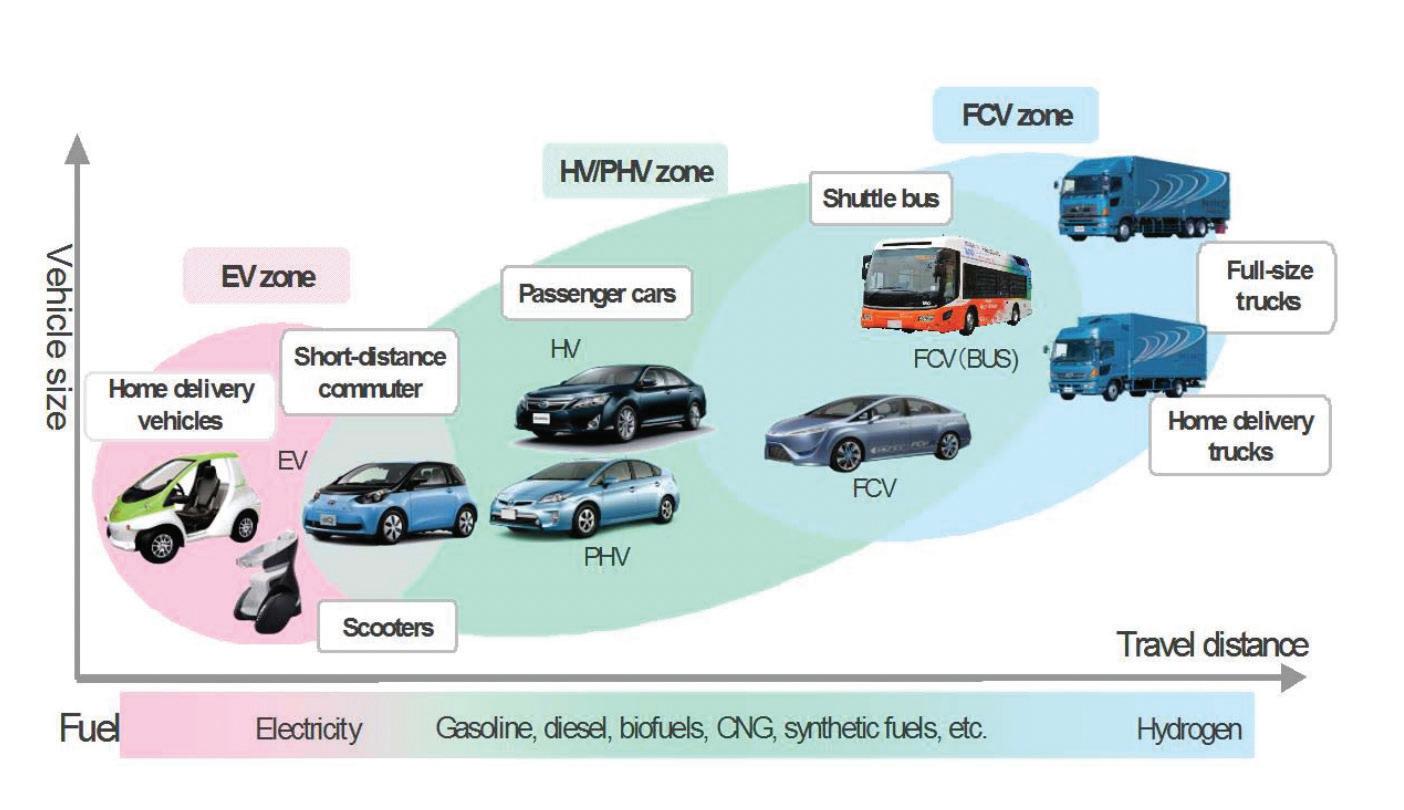
As powerful players within the Australian car industry, Toyota and their allies in the FCAI pose a significant risk to the introduction of policies supporting stronger emissions reduction in the transport sector. Greenpeace will be monitoring any attempts to undermine policies that address Australia’s rising transport pollution problem.
Australia has some of the highest per-capita climate emissions in the world, with 19% of these coming from the transport sector in 2019.51 Cars and light commercial vehicles alone make up over 60% of Australia’s transport pollution levels.52 Australia’s transport pollution is on the rise, spiking sharply over as Covid-19 pandemic lockdowns eased.53
Internal combustion engines powered by fossil fuels still make up over 99% of cars on the road in Australia.54 To reach net zero by 2050, Australia must start planning to phase out the internal combustion engine immediately, aligning at minimum with international targets for 2035.
As the International Council on Clean Transportation has concluded, our vehicles must be zero–not low–emissions: ‘Only battery electric and hydrogen fuel cell electric vehicles have the potential to achieve the magnitude of life-cycle greenhouse gas emissions reductions needed to meet Paris Agreement goals’.55
The rest of the world is already well ahead of Australia in terms of regulating vehicle emissions. A quarter of the global car market has targets mandating the end of internal combustion engine sales in their early 2030s.
At least 80% of the global car market already has fuel efficiency standards for CO2 emissions, leaving Australia at the back of the pack alongside Russia, Indonesia and Turkey.56
Without introducing internationally competitive fuel efficiency standards, Australia risks remaining a dumping ground for polluting cars that most other nations no longer accept.
Figure 7: Emissions reduction potential of electric vehicles, according to the Grattan Institute’s Grattan Car Plan.58
Notes: Manufacturing emissions data are from the International Council on Clean Transportation. Upstream fuel emissions include the emissions generated during electricity production, and upstream emissions associated with combustion engine fuel (such as transport of fuels to a petrol station). This analysis assumes relatively high electric vehicle electricity consumption of 0.183kWh/km in 2021 and 0.174kWh/km in 2030. It assumes manufacturing emissions for electric vehicles remain unchanged between 2021 and 2030, and that the grid decarbonises following the Australian Energy Market Operator (AEMO) ‘step change’ scenario: AEMO (2020).
11% of Australia’s emissions come from light and commercial passenger vehicles. Strong fuel efficiency standards would have a significant impact on Australia’s climate pollution by accelerating our shift to zero-emissions transport.
According to the Grattan Institute’s Grattan Car Plan, in Australia the lifecycle carbon emissions of electric vehicles (EVs) are about half those of internal combustion engine (ICE) vehicles, and getting smaller (see Figure 7).57
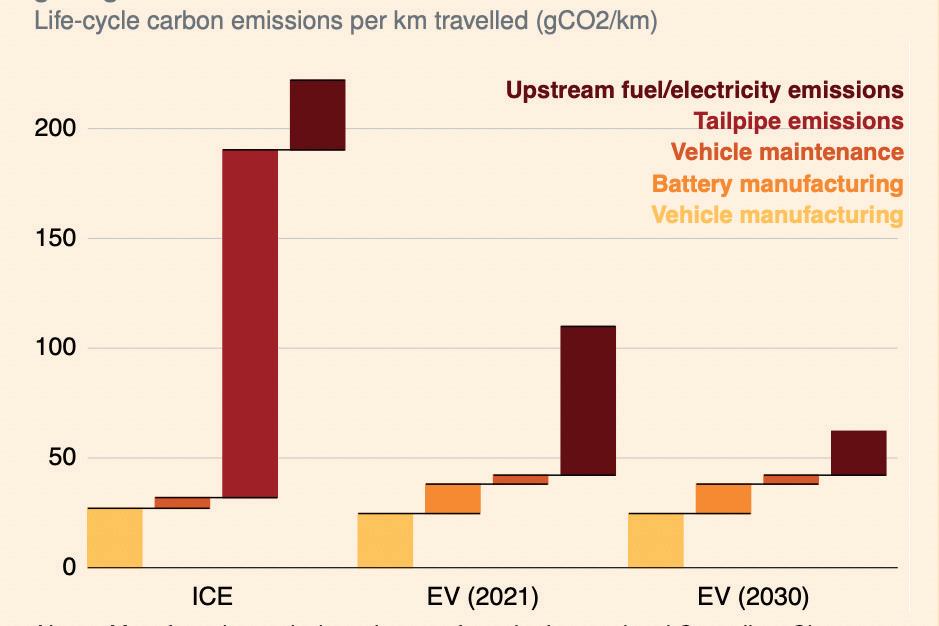
EVs are cheaper to run. A petrol car (11L/100km) costs $14 per 100km but an average electric car costs $4 per 100km – less if you power it with rooftop solar.59 They also have fewer moving parts and less maintenance costs.
If the Federal Government introduced fuel efficiency standards in 2015 when the idea was initially put forward, Australians would have saved almost six billion dollars in fuel costs60 – and with prices at the petrol pump sky-high, Australians are paying the price for government inaction. A rapid switch to electric transport could save Australians nearly half a trillion dollars by 2035.61
Introducing standards creates an incentive for car manufacturers to bring newer models of fuel efficient and zero emissions vehicles to Australia, while also reducing global demand for emissions-heavy vehicles.
Petrol vehicles hurt our health. Pollutants from vehicles powered by internal combustion engines include PM10, PM2.5, NOx, SOx and VOCs increase the risk of cardiovascular illness, Ischemic heart disease, asthma, stroke, respiratory illnesses, lung cancer, bladder cancer, and breast cancer.
The health impacts of transport pollution are estimated to kill about 280 Australians per year and the International Council on Clean Transportation estimates transport-related air pollution carried an economic cost of about $10 billion in Australia in 2015.62, 63 Despite being considered more fuel efficient, diesel engines emit significantly more pollutants than petrol engines per kilometre, are driven further and have less regulation in Australia.64
The Australian vehicle fleet uses about 32 billion litres of fuel per year.65 Available evidence suggests Australian motorists are paying on average almost 30% more for fuel than they should.66 At the same time, Australia’s fuel security has decreased over the last decade. Five Australian refineries have closed over the last decade leaving only two Australian refineries in operation - Ampol’s Lytton refinery and Viva’s Geelong refinery.67
Australia is one of the sunniest, windiest countries on earth, and shifting our car fleet to electric vehicles, run on a renewable-powered grid, would reduce our reliance on imported fuel and shield Australia from the fluctuations of the global petroleum market.

Toyota has long enjoyed a position as one of Australia’s most trusted brands but when it comes to tackling climate change, evidence is mounting that Australians’ trust in Toyota is misplaced. Greenpeace believes Toyota’s well-documented international lobbying against measures to reduce climate pollution from transport, and the growing evidence of the Australian car lobby’s campaign to slow zeroemissions transport, positions Toyota as one of the biggest threats to the introduction of strong Fuel Efficiency Standards.
Vehicle transport pollution plays a huge role in escalating Australia’s greenhouse gas emissions that are damaging the climate, our economy and our environment, and the urgent imperative to reduce emissions within the next few years is well documented in climate science. The lobbying roadblocks thrown up by Toyota and the car lobby to stall Australia’s shift to zero-emissions transport is a problem we can no longer afford.
1. Influence Map (November, 2021), ‘Corporate climate policy footprint: The 50 most influential companies and industry associations blocking climate policy and action globally’, https:// influencemap.org/report/The-Carbon-Policy-Footprint-Report2021-670f36863e7859e1ad7848ec601dda97
2. A. Quick (August 2022), Fuelling Efficiency, The Australia Institute, https://australiainstitute.org.au/post/new-analysis5-9b-fuel-cost-saving-to-commuters-if-fuel-efficiencystandards-introduced/
3. B. Cubby (August 8, 2022), ‘Revealed: Car industry’s secret emissions plan would slow electric vehicle uptake’, The Sydney Morning Herald, https://www.smh.com.au/national/revealed-car-industry-ssecret-emissions-plan-would-slow-electric-vehicle-uptake20220805-p5b7pe.html
4. A. Kong et al. (November 2021), ‘Auto Environmental Guide 2021: A comparative analysis of global automakers’ decarbonisation.’ Greenpeace East Asia https://www.greenpeace.org/static/planet4-eastasiastateless/2021/11/47de8bb4-gpea_auto_environmental_ guide_2021.pdf
5. D. Fung (January 29, 2022), ‘Toyota Maintains Global Number One Spot’, Car Expert, https://www.carexpert.com.au/car-news/ toyota-maintains-global-number-on-spot-in-2021
6. A. Basset (April 16, 2022), ‘The Toyota bZ4X: solidly middling EV - the bZ4X leaves us wondering who Toyota made this for?’, TechCrunch+, https://techcrunch.com/2022/04/15/the-toyotabz4x-ev-solidly-middling/
7. W. Stopford (June 29, 2022), ‘Toyota bZ4X, Subaru Solterra EVs recalled as wheels could fall off’, Car Expert, https://www. carexpert.com.au/car-news/toyota-bz4x-subaru-solterra-evsrecalled-as-wheels-could-fall-off
8. N. Dowling (June 5, 2022), ‘Three Japanese majors illprepared for EV move: Report says key Japanese car makers are well behind global rivals in EV development’, Go Auto News, https://premium.goauto.com.au/three-japanese-majors-illprepared-for-ev-move/
9. Toyota Global (n.d.), ‘Toyota Group - Group Company Profiles’, Toyota Global, https://www.toyota-global.com/ company/history_of_toyota/75years/data/conditions/company/ group/profiles.html
10. Queensland Government (January 1, 2022), ‘Reduce Environmental Impact When Driving - Benefits of Electric Vehicles’, Queensland Government, https://www.forgov.qld. gov.au/mail-facilities-and-vehicles/vehicles/environment/evbenefits
11. D. Welch (2022), ‘Carmakers Start to Starve Combustion Models Out of Existence’, Bloomberg, https://www.bloomberg. com/news/articles/2022-07-08/carmakers-start-to-starvecombustion-models-out-of-existence
12. Toyota Motor Corporation (2021), ‘Integrated Report 2021’, Toyota Motor Corporation, https://global.toyota/pages/global_ toyota/ir/library/annual/2021_001_integrated_en.pdf
13. Sentaku (December 2021), ‘Toyota’s “EV Criticism Book” is blatantly manipulated by the media and the political world’, https://www.sentaku.co.jp/articles/view/21652
14. https://electrek.co/2021/11/11/how-toyota-sneakilyspreads-anti-ev-propaganda-in-japan/
15. Sentaku (December 2021), ‘Toyota’s “EV Criticism Book” is blatantly manipulated by the media and the political world’, https://www.sentaku.co.jp/articles/view/21652
16. F. Lambert (January 24, 2020), ‘Toyota’s ‘self-charging hybrid’ ad is banned in Norway, deemed a lie’, Elektrek, https:// electrek.co/2020/01/24/toyota-self-charging-hybrid-adbanned-norway-lie/
17. AutoCar (June 6, 2007), ‘Misleading Toyota Prius Advert banned’, Autocar, https://www.autocar.co.uk/car-news/ motoring/misleading-toyota-prius-advert-banned
18. M, Sweney (June 6, 2007), ‘Toyota ad rapped for green claims’, The Guardian, https://www.theguardian.com/ environment/2007/jun/06/media.business
19. https://twitter.com/toyotauk/status/1323590231208112128
20. Canberra Toyota (July 15, 2021), accessed via Facebook 1 September 2022, https://m.facebook.com/story.php?story_fb id=4056460791143479&id=303074929779002&eav=AfZ-XGOu9zgfGgqfKX8bwdTnD-NciECnnF77xwVieyBUmThkHRgqBaoIJ 1zlX5tldE&paipv=0&_rdr
21. Topsel Toyota (“@TopselToyota”) (July 12 2021), accessed via Twitter 2 September 2022, https://twitter.com/TopselToyota/ status/1414828458790645762
22. F. Lambert (January 24, 2020) ‘Toyota’s ‘self-charging hybrid’ ad is banned in Norway, deemed a lie’, Elektrek, https:// electrek.co/2020/01/24/toyota-self-charging-hybrid-adbanned-norway-lie/
23. A. Young (April 9, 2014) ‘Lexus Advertisement For Hybrid Cars Has Infuriated Electric Car Fans Who Accuse Toyota Of Stoking Fear’, International Business Times, https://www.ibtimes. com/lexus-advertisement-hybrid-cars-has-infuriated-electriccar-fans-who-accuse-toyota-stoking-1678790
24. Influence Map (November, 2021), ‘Corporate climate policy footprint: The 50 most influential companies and industry associations blocking climate policy and action globally’, https:// influencemap.org/report/The-Carbon-Policy-Footprint-Report2021-670f36863e7859e1ad7848ec601dda97
25. A. Kong et al. (November 2021), Auto Environmental Guide 2021: A comparative analysis of global automakers’ decarbonisation, Greenpeace East Asia, https://www.greenpeace.org/static/planet4-eastasiastateless/2021/11/47de8bb4-gpea_auto_environmental_ guide_2021.pdf
26. B. Cubby (August 8, 2022), ‘Revealed: Car industry’s secret emissions plan would slow electric vehicle uptake’, Brisbane Times, https://www.brisbanetimes.com.au/national/revealedcar-industry-s-secret-emissions-plan-would-slow-electricvehicle-uptake-20220805-p5b7pe.html
27. B. Newton (August 8, 2018), ‘Toyota Backs New Emissions Thinking: North American Standards are better for Australia… and Toyota’, CarSales, https://www.carsales.com.au/editorial/ details/toyota-backs-new-emissions-thinking-113997/?utm_ source=motoring.com.au&utm_medium=referral&utm_ campaign=decommission
28. The Hindu (December 28, 2017), ‘Toyota Official Red-Flags Electric Vehicle Push in India’, The Hindu, https://www.thehindu. com/business/Industry/toyota-official-red-flags-electricvehicle-push-in-india/article22310491.ece
29. S. Schrader (August 3, 2022), ‘Toyota’s Hino Trucks Faked Emissions Data Since at Least 2003: Report’, The Drive, https:// www.thedrive.com/news/toyotas-hino-trucks-faked-emissionsdata-since-at-least-2003-report
30. S. Hanley (November 15, 2021), ‘Toyota-led Team Japan Aims To Save Internal Combustion Engine From Extinction’, CleanTechnica, https://cleantechnica.com/2021/11/15/toyotasteam-japan-aims-to-save-internal-combustion-engine-fromextinction/
31. Alistair Davis (March 2021), Toyota NZ submission to the Climate Change Commission (NZ), https://haveyoursay. climatecommission.govt.nz/comms-and-engagement/ future-climate-action-for-aotearoa/consultation/view_ respondent?uuId=75344300
32. F. Lambert (January 24, 2020), ‘Toyota’s ‘self-charging hybrid’ ad is banned in Norway, deemed a lie’, Electrik, https:// electrek.co/2020/01/24/toyota-self-charging-hybrid-adbanned-norway-lie/
33. M. Teixeira (October 27, 2012), ‘Mexico clashes with auto industry over fuel efficiency’, Reuters, https://www.reuters.com/ article/mexico-auto-idINL1E8LQ8AU20121026
34. E. Gatten (July 30, 2022), ‘Toyota warns Government it may stop manufacturing in UK if it bans hybrid cars’, The Telegraph, https://www.telegraph.co.uk/news/2022/07/30/toyota-warnsgovernment-may-stop-manufacturing-uk-bans-hybrid/
35. W. Stopford (November 11, 2021), ‘COP26: Every carmaker that pledged to stop selling fossil-fuel vehicles by 2040’, CarExpert, https://www.carexpert.com.au/car-news/cop26every-carmaker-that-pledged-to-stop-selling-fossil-fuelvehicles-by-2040
36. N. Hellen and G. Pogrund (April 3, 2022), ‘Toyota threatens to pull out of UK manufacturing over net-zero plans’, The Times, https://www.thetimes.co.uk/article/toyota-threatens-to-pullout-of-uk-manufacturing-over-net-zero-plans-djwwkzq86
37. K. Laing (July 29, 2022), ‘Toyota’s Lobbying Blitz Gets Results in Manchin-Schumer Deal’, Bloomberg Asia Edition, https://www.bloomberg.com/news/articles/2022-07-28/ toyota-s-lobbying-blitz-gets-results-in-manchin-schumerdeal#xj4y7vzkg
38. R. Swift et al (August 12, 2022), ‘Japan’s Hino Motors, Toyota accused of misconduct in U.S. lawsuit’, Reuters, https:// www.reuters.com/legal/japans-hino-motors-toyota-accusedmisconduct-us-lawsuit-2022-08-12/
39. T. Hsu (July 28, 2021), ‘Toyota’s Support of Trump Emissions Rules Shocks Californians’, New York Times, https:// www.nytimes.com/2019/10/29/business/toyota-californiaemissions-honda-gm-chrysler.htm
40. LobbyMap (2022), ‘Toyota Motor’, InfluenceMap, https:// lobbymap.org/company/Toyota-Motorhttps://lobbymap.org/ company/Toyota-Motor
41. LobbyMap (2022), ‘Toyota Motor’, InfluenceMap, https:// lobbymap.org/company/Toyota-Motorhttps://lobbymap.org/ company/Toyota-Motor
42. Toyota (January 6, 2022), ‘Toyota marks 25 years as Australia’s best-selling automotive brand’, https://www.toyota. com.au/news/toyota-marks-25-years-as-australias-bestselling-automotive-brand
43. B. Cubby (August 8, 2022), ‘Revealed: Car industry’s secret emissions plan would slow electric vehicle uptake’, The Sydney Morning Herald, https://www.smh.com.au/national/revealed-car-industry-ssecret-emissions-plan-would-slow-electric-vehicle-uptake20220805-p5b7pe.html
44. B. Cubby (August 8, 2022), ‘Revealed: Car industry’s secret emissions plan would slow electric vehicle uptake’, The Sydney Morning Herald, https://www.smh.com.au/national/revealed-car-industry-ssecret-emissions-plan-would-slow-electric-vehicle-uptake20220805-p5b7pe.html
45. B. Cubby (August 8, 2022), ‘Revealed: Car industry’s secret emissions plan would slow electric vehicle uptake’, The Sydney Morning Herald, https://www.smh.com.au/national/revealed-car-industry-ssecret-emissions-plan-would-slow-electric-vehicle-uptake20220805-p5b7pe.html
46. P. Hannam (August 20, 2021), ‘Blowing smoke: Toyota’s emissions advantage splits sector’, Sydney Morning Herald, https://www.smh.com.au/environment/climate-change/blowingsmoke-toyota-s-emissions-advantage-splits-sector-20210819p58k8u.html
47. https://www.smh.com.au/environment/climate-change/ blowing-smoke-toyota-s-emissions-advantage-splits-sector20210819-p58k8u.html
48. Toyota Australia (November, 2017), ‘Inquiry into Electric Vehicles Standing Committee on Economy and Infrastructure’, Toyota Motor Corporation Australia Limited via The Parliament of Victoria, https://www.parliament.vic.gov.au/images/stories/ committees/SCEI/Electric_Vehicles/Submissions/S29-Toyota.pdf
49. S. Edelstein (September 20, 2017), ‘2017 electric cars with more than 100 miles of range (updated)’, Green Car Reports, https://www.greencarreports.com/news/1107455_2017-electriccars-with-more-than-100-miles-of-range
50. Toyota Australia (November, 2017), ‘Inquiry into Electric Vehicles Standing Committee on Economy and Infrastructure’, Toyota Motor Corporation Australia Limited via The Parliament of Victoria, https://www.parliament.vic.gov.au/images/stories/ committees/SCEI/Electric_Vehicles/Submissions/S29-Toyota.pdf
51. Department of Industry Science, Energy and Resources, (2021), ‘Australia’s emissions projections 2021’, Commonwealth of Australia, https://www.industry.gov.au/sites/default/ files/October%202021/document/australias_emissions_ projections_2021_0.pdf
52. Climate Council (August 10, 2022), Everything you need to know about how Australia can boost electric vehicle supply’, https://www.climatecouncil.org.au/how-australia-can-boostelectric-vehicle-supply/
53. A. Morton (June 27, 2022), ‘Australia’s emissions climbed in Coalition’s final year as transport and fossil fuels wiped out gains during Covid’, The Guardian, https://www.theguardian. com/environment/2022/jun/27/australias-emissions-climbed-incoalitions-final-year-as-transport-and-fossil-fuels-wiped-outgains-during-covid
54. Australian Bureau of Statistics (2021), ‘Motor Vehicle Census, Australia’, ‘https://www.abs.gov.au/statistics/industry/ tourism-and-transport/motor-vehicle-census-australia/latestrelease
55. G. Bieker (July 20, 2021), ‘A global comparison of the life-cycle greenhouse gas emissions of combustion engine and electric passenger cars, The International Council on Clean Transportation, https://theicct.org/publication/a-globalcomparison-of-the-life-cycle-greenhouse-gas-emissions-ofcombustion-engine-and-electric-passenger-cars/
56. Smit, Whitehead, Surawski (May 30, 2019), ‘Australians could have saved over $1 billion in fuel if car emissions standards were introduced 3 years ago’, The Conversation, https://theconversation.com/australians-could-have-savedover-1-billion-in-fuel-if-car-emissions-standards-wereintroduced-3-years-ago-117190
57. M. Terrill et al. (October 2021), ‘The Grattan car plan: Practical policies for cleaner transport and better cities’, The Grattan Institute, https://grattan.edu.au/wp-content/ uploads/2021/10/Grattan-Car-Plan.pdf
58. M. Terrill et al. (October 2021), ‘The Grattan car plan: Practical policies for cleaner transport and better cities’, The Grattan Institute, https://grattan.edu.au/wp-content/ uploads/2021/10/Grattan-Car-Plan.pdf
59. Electric Vehicle Council (n.d.), homepage, https:// electricvehiclecouncil.com.au/
60. A. Quick (August 2022), Fuelling Efficiency, The Australia Institute, https://australiainstitute.org.au/post/new-analysis5-9b-fuel-cost-saving-to-commuters-if-fuel-efficiencystandards-introduced/
61. Deloitte Access Economics (October 23, 2021), ‘Local community benefits of zero emission vehicles in Australia’, report commissioned by Australian Conservation Foundation, https://www.acf.org.au/zero-emission-vehicles-in-australia
62. M. Terrill et al. (2021), ‘The Grattan Car Plan: Practical policies for cleaner transport and better cities’, Grattan Institute, https://grattan.edu.au/report/grattan-car-plan/
63. S Anenberg et al. (2019), ‘A Global Snapshot of the Air Pollution-related health impacts of transportation sector emissions in 2010 and 2015’, International Council on Clean Transportation, https://theicct.org/wp-content/ uploads/2021/06/Global_health_impacts_transport_ emissions_2010-2015_20190226.pdf
64. M. Terrill et al. (2021), ‘The Grattan Car Plan: Practical policies for cleaner transport and better cities’, Grattan Institute, https://grattan.edu.au/report/grattan-car-plan/
65. Australian Government, Department of Climate Change, Energy, the Environment and Water (n.d.), ‘Australian Motor Vehicle Emission Inventory for the National Pollutant Inventory (NPI), http://www.npi.gov.au/resource/australian-motor-vehicleemission-inventory-national-pollutant-inventory-npi
66. Australian Government, Climate Change Authority (June 2014), Light vehicle emissions standards for Australia: Research report, https://www.climatechangeauthority.gov. au/sites/default/files/2020-06/Light%20Vehicle%20Report/ Lightvehiclesreport.pdf
67. L. Carter et al. (April 2022), Over a barrel: Addressing Australia’s liquid fuel security, The Australia Institute, https:// apo.org.au/sites/default/files/resource-files/2022-04/aponid317482.pdf
The information in this report is for general information purposes only. Greenpeace Australia Pacific Limited (GPAP) is not an investment or financial advisor. This document is not intended as legal, financial or investment advice and should not be relied on as such. You should consider seeking independent legal, financial, taxation or other advice to check how the information relates to your unique circumstances. Neither GPAP nor the authors are liable for any loss caused, whether due to negligence or otherwise arising from the use of, or reliance on, the information provided directly or indirectly. This includes but is not limited to lost profits or punitive or consequential damages. The opinions expressed in this report are based on the documents referenced in this document. GPAP encourages readers to review those documents.
This report contains summary information about Toyota and its activities and the views, opinions and beliefs of GPAP in relation to those matters which are current only as at the date of publication. GPAP reserves the right to change or modify any of its opinions expressed herein at any time and for any reason and expressly disclaims any obligation to correct, update or revise the information contained herein or to otherwise provide any additional materials.
Greenpeace encourages the reproduction and distribution of our materials, electronic products and/or services, including our name and logo. However, there are limits on these uses. Our ground rules are available at https://www.greenpeace.org.au/copyright/
Together, we can make transport cleaner, greener and cheaper. Become a Greenpeace supporter today to help electrify transport in Australia. © Greenpeace / Isabella Moore
